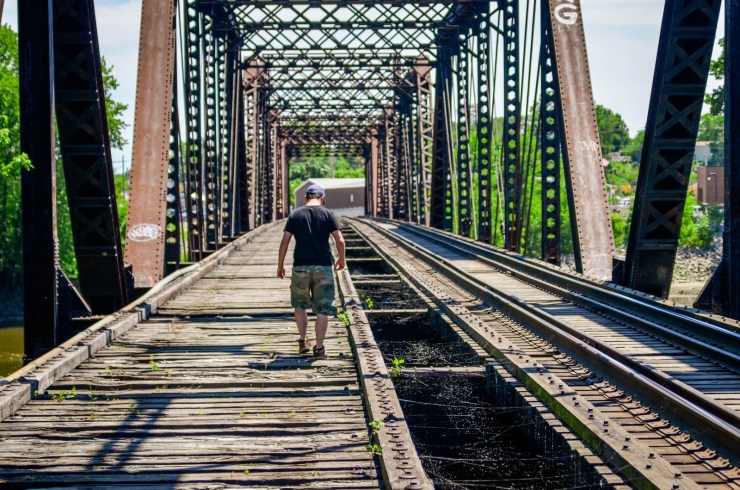Train tracks. We’ve all heard arguments for, and against, photographing on or near them. When I first started in photography, I thought photographing near train tracks was really cool. It provided a texture element that was otherwise unseen and created some opportunities for some cool portraits.
But I quickly learned that photographing on train tracks was a bad idea. And since then, I’ve flat out refused to photograph any of my clients — or my personal work, for that matter — on or near train tracks. Here’s why.
It’s illegal
Railroad tracks, trestles and yards are private property and they are protected by federal law. That means if you trespass on that property, you can be arrested and face federal charges. Simply put — it’s illegal.
If your heart is set on photographing on the tracks or other railroad property, you should contact the railroad company to get written permission, as well as to make sure that it’s safe to do so.
It’s dangerous
Operation Lifesaver posted an article a few years back about why it’s important to not photograph on or near the tracks. Here were their six reasons:
- Trains can’t stop quickly to avoid people or vehicles on the tracks.
- An optical illusion makes it hard to determine a train’s distance from you — and its speed. You can’t hear modern trains coming. Their sound is behind them.
- The average train overhangs the track by at least three feet.
- Railroad tracks, trestles, yards and rights of way are private property.
- No tracks should be assumed to be abandoned or inactive.
- People in your community mimic your behavior.
According to Operation Lifesaver, over 270 people were killed from train collisions in 2018, while 819 people were injured. Since 2011, more than 20 Americans have been killed or injured in photography-related incidents.

What about abandoned tracks?
I distinctly remember a few summers ago when I was finishing up a senior photoshoot, the client saw a set of abandoned train tracks with an abandoned train car around where we were standing. The mom asked for some shots around the train car, or with it in the background.
I said no.
The reason behind this was that — even though the tracks were abandoned — I didn’t want to set an example for other photographers to photograph on train tracks. And Operation Lifesaver agrees in their sixth point mentioned above. If those tracks were seen on social media or other websites, there’s a chance that other photographers would try something I had done in their own area. And maybe those tracks wouldn’t be abandoned, creating for a potentially dangerous situation.
Once I explained this viewpoint to the client, they were very understanding and we moved on, and ended up finding an abandoned silo that was even cooler!
Even if you love photographing on or near train tracks, I’d encourage you to rethink that. Even if the tracks are clearly abandoned, again, I’d rethink that too. You never know who’s watching your work and looking up to you as a photographer to take ideas from what you’re doing.
Tell your story with the second annual Visual Storytelling Conference!
Experience four days of interactive, online training sessions featuring a range of educational content with experienced photographers and content creators. This free event kicks off with a series of technical boot camps to build essential skills, followed by live, online sessions on photography, video, business and social media. Join live from March 10-13, 2022!
